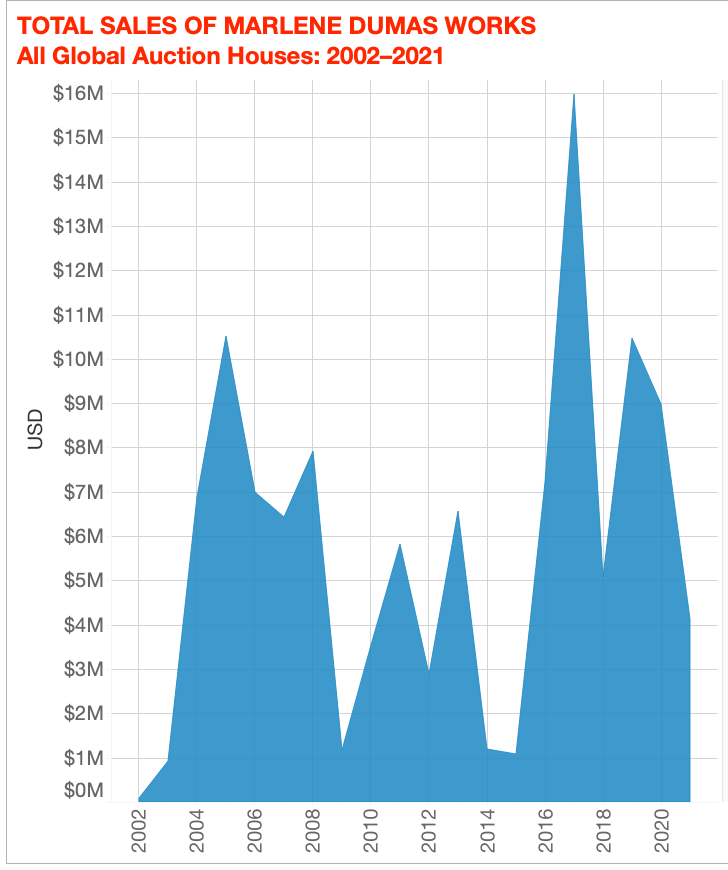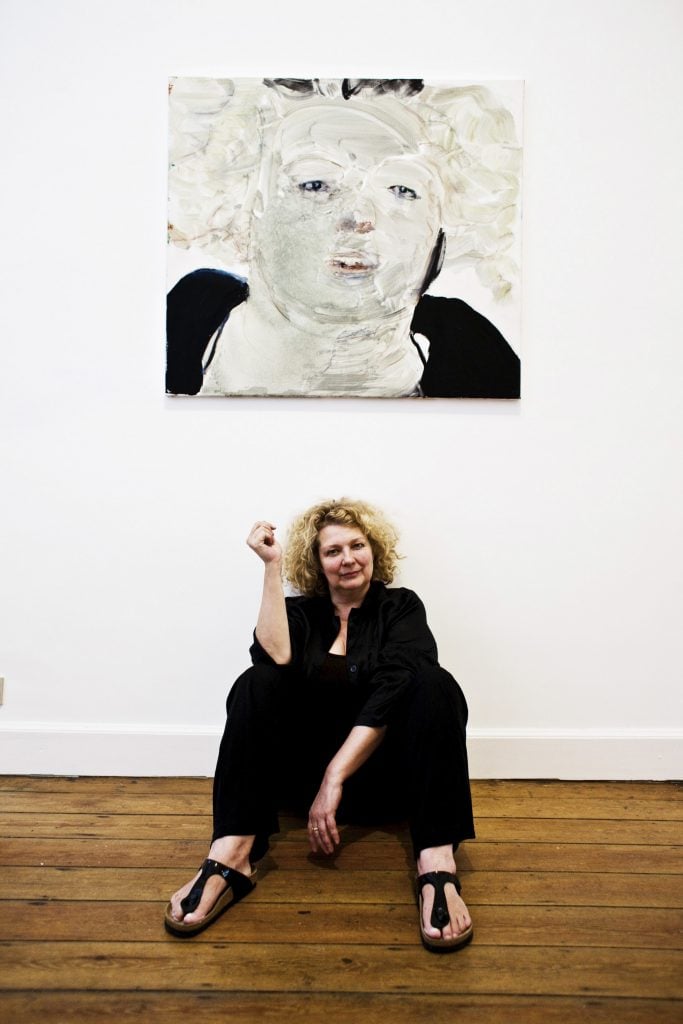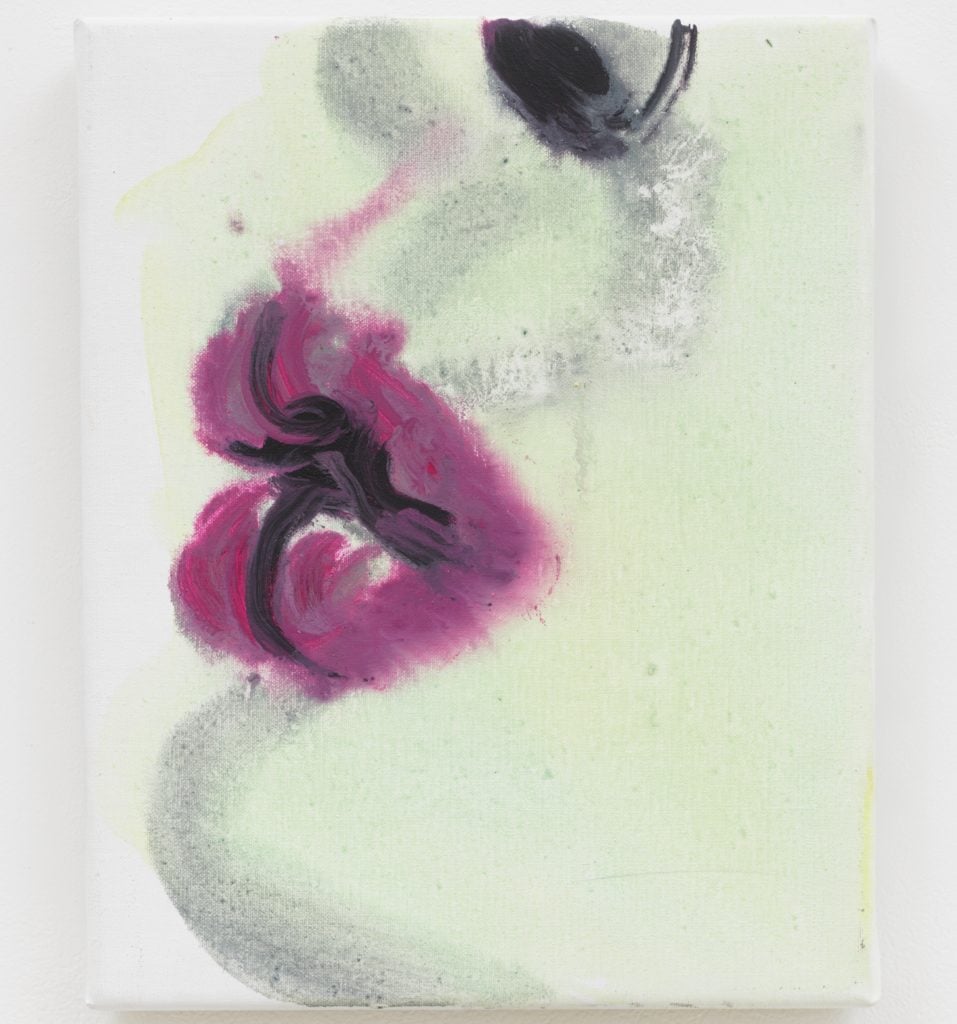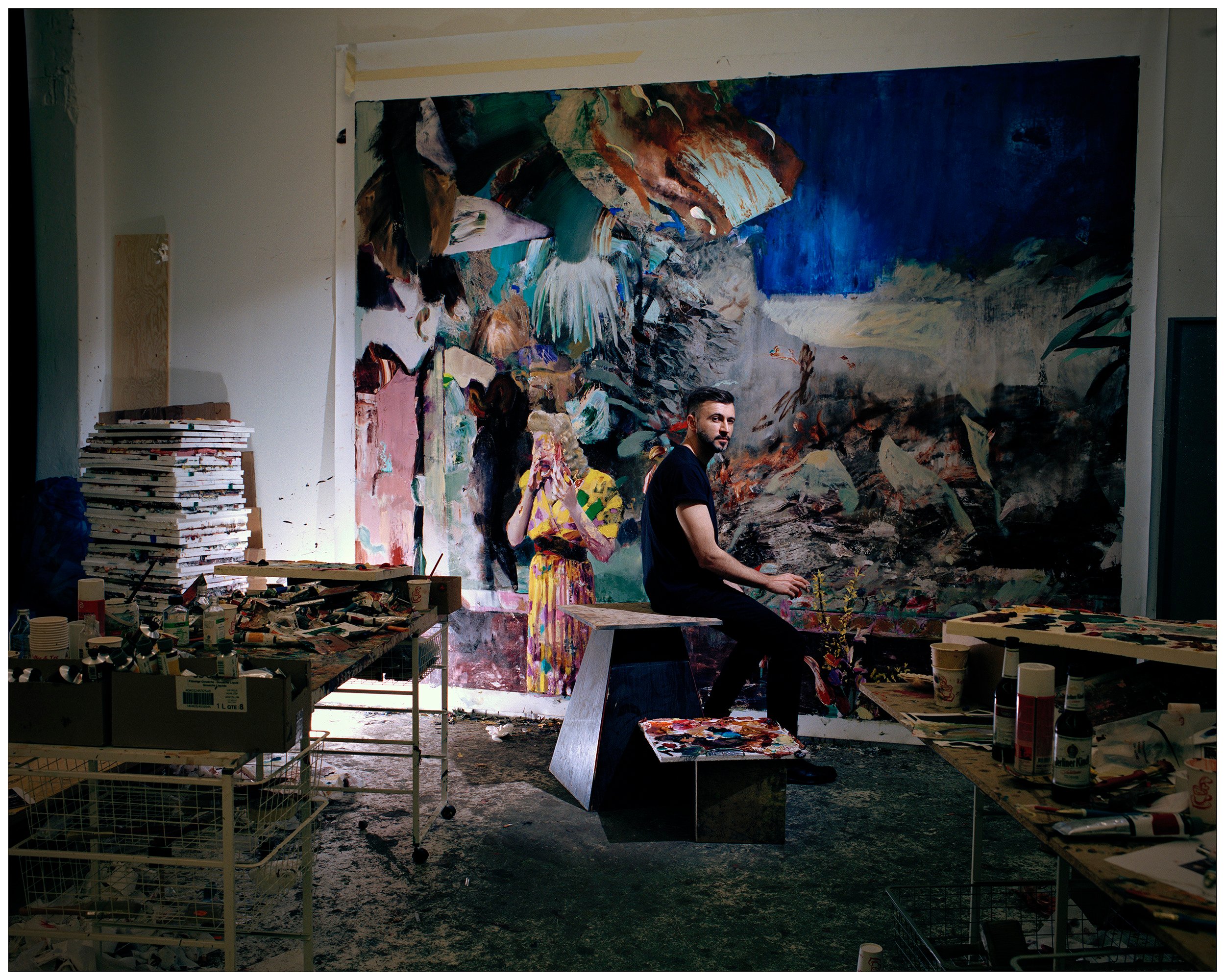Marlene Dumas’s paintings seduce with their brushy surfaces and saturated colors—and then, as soon as they draw you in, they twist the knife. The South African-born, Amsterdam-based artist’s explorations of lust, power, motherhood, and suffering are on display in a breathtaking exhibition at François Pinault’s Palazzo Grassi in Venice, the latest in a series of monographic shows that coincide with the Venice Biennale.
Lenders to the exhibition are a who’s who of contemporary-art power-brokers. There’s Pinault, of course, but also Dallas mega-collector Howard Rachofsky; Glenstone founders Mitchell and Emily Rales; Bed Bath & Beyond founder Marty Eisenberg and his wife Rebecca; MoMA board chair Marie-Josée Kravis and her husband Henry; and Swiss film director Thomas Koerfer. Dumas’s dealer, David Zwirner, and his wife Monica also loaned a delicate painting, Areola (2018), from their personal collection.
Dumas is an example of an artist who has achieved considerable success with nary a whiff of the quick-flip speculation that so often plagues coveted painters. For a look under the hood at how exactly her market was built, we consulted the Artnet Price Database.
The Context
Auction Record: $6.3 million, achieved at Sotheby’s London in July 2008
Dumas’s Performance in 2021
Lots sold: 28
Bought in: 11
Sell-through rate: 72 percent
Average sale price: $147,639
Mean estimate: $155,382
Total sales: $4.1 million
Top painting price: $2.3 million
Lowest painting price: $226,131
Lowest overall price: $710, for a color lithograph from an edition of 60

© 2022 Artnet Worldwide Corporation.
The Appraisal
- Market peak. Dumas’s secondary market peaked in 2017, the same year she had concurrent solo museum shows at the Albertinum, Kupferstich-Kabinett, and Staatliche Kunstsammlungen in Dresden. While most of her collectors hold onto their best paintings or sell privately, three of her top 10 auction prices were set that year, when her work generated a total of nearly $16 million.
- Sluggish public offering. Dumas’s best works rarely come up for auction—especially not over the past decade. That’s why her top public price was set way back in 2008. The record-setting work, The Visitor (1995)—a painting of women lining up in Amsterdam’s red-light district, rendered from behind—sold for $6.3 million. It is now on view at Palazzo Grassi.
- Mixed media. Top paintings by Dumas may be hard to come by, but the artist is also a prolific printmaker. She has produced digital prints in editions of 20, 60, 75, and 80 and lithographs in editions of seven, 20, 25, 50, 60, 100, and 250. She is also a dedicated watercolorist and creator of works on paper; her top price for the medium is $533,000.
- Behind closed doors. On the primary market, top paintings by Dumas cost around $2.5 million to $3 million, according to the art advisor Todd Levin.
- Most wanted. Dumas’s explicitly sexual paintings (think open orifices) and political work can be a harder sell at auction, but her series of caged women and other female portraits are in high demand. The painting Cathedral (2001), a tall, thin (but not particularly X-rated) portrait of a prostitute in Amsterdam’s red-light district, fetched $4.1 million at Sotheby’s London in February 2020, just over its high estimate of $3.6 million.

Marlene Dumas. Photo: Wim Daneels.
Bottom Line
In one way, it’s perhaps surprising that Dumas has not been subject to the same kind of speculation as her younger figurative-painting peers. (She has seen fewer of her works sell at auction for over $4 million than Matthew Wong, and Adrian Ghenie’s nearly $9 million record leaves hers in the dust.)
Part of this may be due to careful placement on the part of her dealers, global juggernaut David Zwirner, Frith Street in London, and Zeno X in Antwerp, who have sold her work to buyers unlikely to resell. It doesn’t help that Dumas is a female artist in an art world that still undervalues the work of women (particularly if they are no longer brand-new to the scene). Dumas herself has also refused to bend to the will of the market, creating work that explores the darker side of humanity, like terrorism and war crimes.
Auction prices are, to some degree, irrelevant—Dumas’s place in the pantheon is secure thanks to her all-star collector base and robust museum presence. If you are a flipper looking to make a fast buck, it’s no wonder her work is not particularly appealing. But if you are looking for a work that shows a fine artist at the peak of their powers, a painting by Dumas is a wise choice—if you can get your hands on one. And if you can’t, Dumas happens to be one of the rare artists whose works on paper are as integral to her oeuvre as her paintings (and a lot less expensive).
Follow Artnet News on Facebook:
Want to stay ahead of the art world? Subscribe to our newsletter to get the breaking news, eye-opening interviews, and incisive critical takes that drive the conversation forward.







